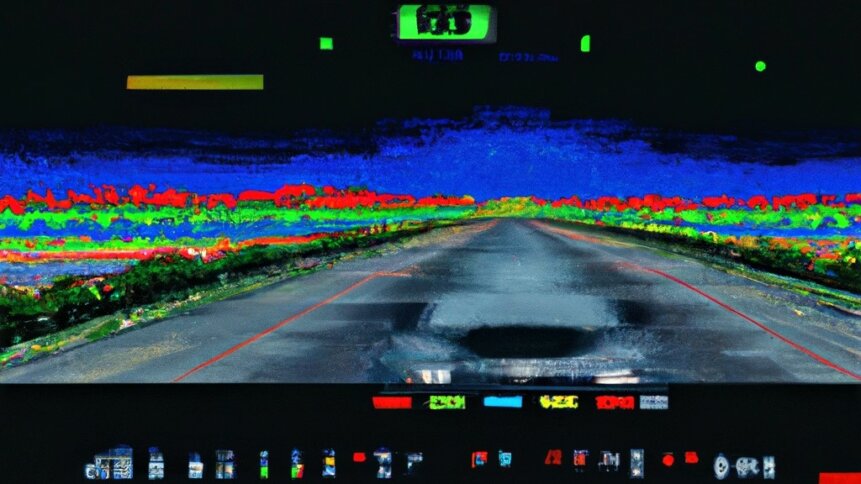Emergency fail for EV AM radio omission

|
Getting your Trinity Audio player ready...
|
Drivers shopping for new electric vehicles (EV) are on the rise. Appetite for EVs – buoyed in the US by clean vehicle credits of up to $7,500 available from 2023 – has never been higher, according to Electrek, a site that’s been tracking the transition towards zero-emission vehicles since 2013. In the showroom, customers are drawn to EVs from makers such as Tesla, Ford, Hyundai, GM, and others, based on various criteria such as vehicle price, battery range on a single charge, and cabin size – to list just a few buyer considerations. Typically, automakers are only too happy to fill their vehicles with features to enable safer driving and provide improved comfort. But, increasingly, there’s one accessory that’s stopped appearing on new EVs rolling out of the factory – an AM radio. And the safety concerns of such an EV AM radio omission may have caught car manufacturers by surprise.
EV AM radio omission concerns
The Wall Street Journal has been following the EV AM radio omission trend for a few years now – pointing out in 2018 that ‘Your Tesla can go zero to 60 in 2.5 seconds, but can’t get AM radio’. And objections to new EVs being sold without an AM radio have been growing more vocal lately on grounds of safety. “Broadcast AM radio remains a crucial, cost-free source of news, sports, and weather, and, more importantly, is an essential medium for public safety officials — including the president — to communicate with the public during emergencies,” wrote US Senator Edward J Markey to multiple automakers in December 2022, including heads of BMW, Mercedes Benz, Honda, Mazda, Mitsubishi Motors, and others (a PDF link to the 60-page submission can be found here).
Putting yourself in the shoes of an EV designer, it’s straightforward to see why AM radio may have been removed from the spec sheet. Compared with alternatives such as FM or DAB radio, the sound quality of AM broadcasts are often poor. AM radio waves travel further and are better able to penetrate buildings and other objects, but the crackly, hissy audio isn’t to everyone’s taste. And, according to manufacturers of EV models, electric motors present in the vehicles can interfere with AM radio frequencies to produce an annoying buzzing sound, adding to the audio interference.
But that preference for digital technologies could soon change if a storm hits. Brook Long, who served as the Administrator of the US Federal Emergency Management Agency (FEMA) and was responsible for coordinating the federal response to the damage done by Hurricane Harvey in 2017, has good things to say about AM radio. And his words emphasize why EV AM radio omission could be problematic in the event of an emergency. Put simply, it turns out that nothing is more reliable than broadcast radio. And, as Senator Markey writes, “Despite innovations such as the smartphone and social media, AM/FM broadcast radio remains the most dependable, cost-free, and accessible communication mechanism for public officials to communicate with the public during times of emergency.”
Communications backup
As FEMA explains on its website, the Emergency Alert System (EAS) is a national public warning system that requires radio and TV broadcasters, cable TV, wireless cable systems, satellite and wireline operators to provide the US President with capability to address the American people within 10 minutes during a national emergency. For this reason, many radio stations – which offer good coverage across the US – are equipped with backup power to allow them to continue broadcasting in the event of a power cut.
A 2022 consumer study, carried out by market analyst firm Edison Research – which specializes in media-related technologies – reports that radio still dominates the in-car listening environment. And its findings apply to not just older listeners, but also the Gen Z demographic (aged 13 – 24), which have grown up in an age of the internet and social media. Across all listening locations, mobile audio has surpassed radio. But not inside vehicles, where AM radio and other broadcasts still dominate. In fact, the Edison Research data suggests that younger listeners spend almost half of their time listening to AM/FM radio when travelling in cars.
Certainly, the healthy consumer appetite doesn’t explain EV AM radio omission. And there’s some confusion, too, on the automaker side. EV producers such as Tesla supply vehicles that lack AM radio, and F-150 forum members are disgruntled about Ford’s decision to omit AM radio from the 2023 electric version of its popular truck. But not all EV makers leave out the option – for example, Hyundai offers AM radio on all of its vehicles in the US, including electric models.
The capability for EVs to feature AM radio is there. But, as mentioned, the enduring popularity of listening to talk shows and sports radio in the car may have caught EV manufacturers by surprise. Focusing on audio quality alone, it’s easy to see how AM radio dropped off the design table. But even if you’re not a fan of talk radio, you’ll likely appreciate it during an emergency, and that’s a big reason to reverse EV AM radio omission and put it back on the feature list for future EVs.









